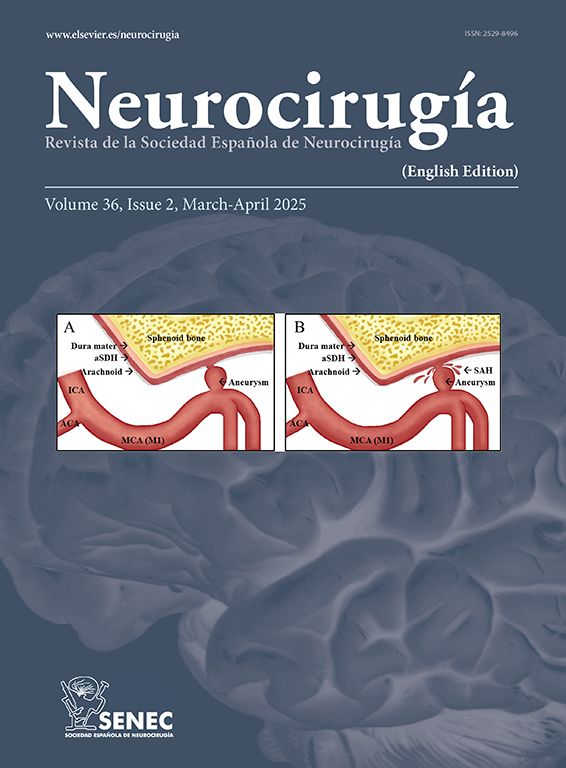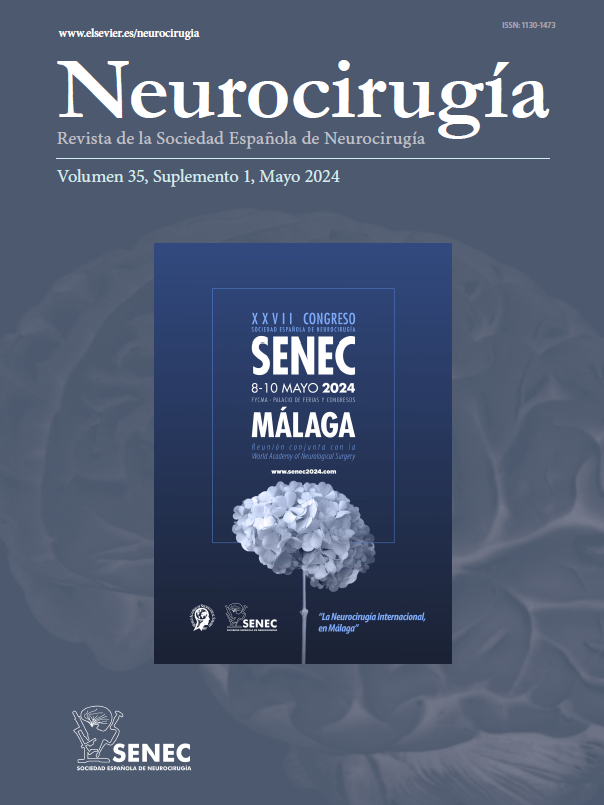Practice in simulation models optimizes learning and manual skills necessary in neurosurgical training.
ObjectivesTo describe a neurosurgical simulation model for the resection of brain tumors using easily accessible materials and to evaluate the acceptance of the model through a questionnaire.
MethodsAn artificial tumor based on gelatin and spongostan with infiltrative characteristics was elaborated. It was injected into a bovine brain and the latter into a dry skull. Its location was studied to later operate it using microsurgical instruments. Dural opening, corticotomy, biopsy and debulking with supramarginal resection were performed and the participants evaluated the model through a Likert-type questionnaire.
ResultsIn vivo simulation models, cadaveric preparations, 3D printing, virtual reality and injection of artificial lesions into animal brains ex vivo are described. In the latter, the creation of tumors based on different materials, including gelatin, is mentioned. It is important that the tumor is easy to inject and resistant to heat, so a mixture of gelatin - spongostan was created. This model describes qualities to emulate tumor surgery as well as pre-surgical planning, reconstruction of the subarachnoid space and continuous instillation of artificial blood to the surgical bed.
ConclusionAn intraaxial tumor simulation model was described as a useful tool to improve surgical techniques in oncological neurosurgery. It proved to have a good degree of acceptance in the participants.
La práctica en modelos de simulación optimiza el aprendizaje y las habilidades manuales necesarias en la formación neuroquirúrgica.
ObjetivosDescribir un modelo de simulación neuroquirúrgico para la resección de tumores cerebrales usando materiales de fácil acceso y evaluar la aceptación del modelo a través de un cuestionario.
Material y métodosSe elaboró un tumor artificial a base de gelatina y spongostan con características infiltrantes. Se inyectó a un encéfalo bovino y éste a un cráneo en seco. Se estudió su localización para posteriormente operarlo usando instrumental microquirúrgico. Se realizó apertura dural, corticotomía, biopsia y cavitación tumoral con resección supramarginal y los participantes evaluaron el modelo a través de un cuestionario tipo Likert.
ResultadosSe describen modelos de simulación in vivo, preparados cadavéricos, impresiones 3D, realidad virtual e inyección de lesiones artificiales a encéfalos de animales ex vivo. En estos últimos se menciona la creación de tumores a base de distintos materiales entre ellos gelatina. Es importante que el tumor sea de fácil inyección y sea resistente al calor por ello se creó una mezcla de gelatina - spongostan. Este modelo describe cualidades para emular una cirugía tumoral así como la planificación prequirúrgica, la reconstrucción del espacio subaracnoideo y la instilación continua de sangre artificial al lecho quirúrgico.
ConclusiónSe describió un modelo de simulación tumoral intraxial como una herramienta útil para mejorar técnicas quirúrgicas en la neurocirugía oncológica. Demostró tener un buen grado de aceptación en los participantes.
Article

If it is the first time you have accessed you can obtain your credentials by contacting Elsevier Spain in suscripciones@elsevier.com or by calling our Customer Service at902 88 87 40 if you are calling from Spain or at +34 932 418 800 (from 9 to 18h., GMT + 1) if you are calling outside of Spain.
If you already have your login data, please click here .
If you have forgotten your password you can you can recover it by clicking here and selecting the option ¿I have forgotten my password¿.






